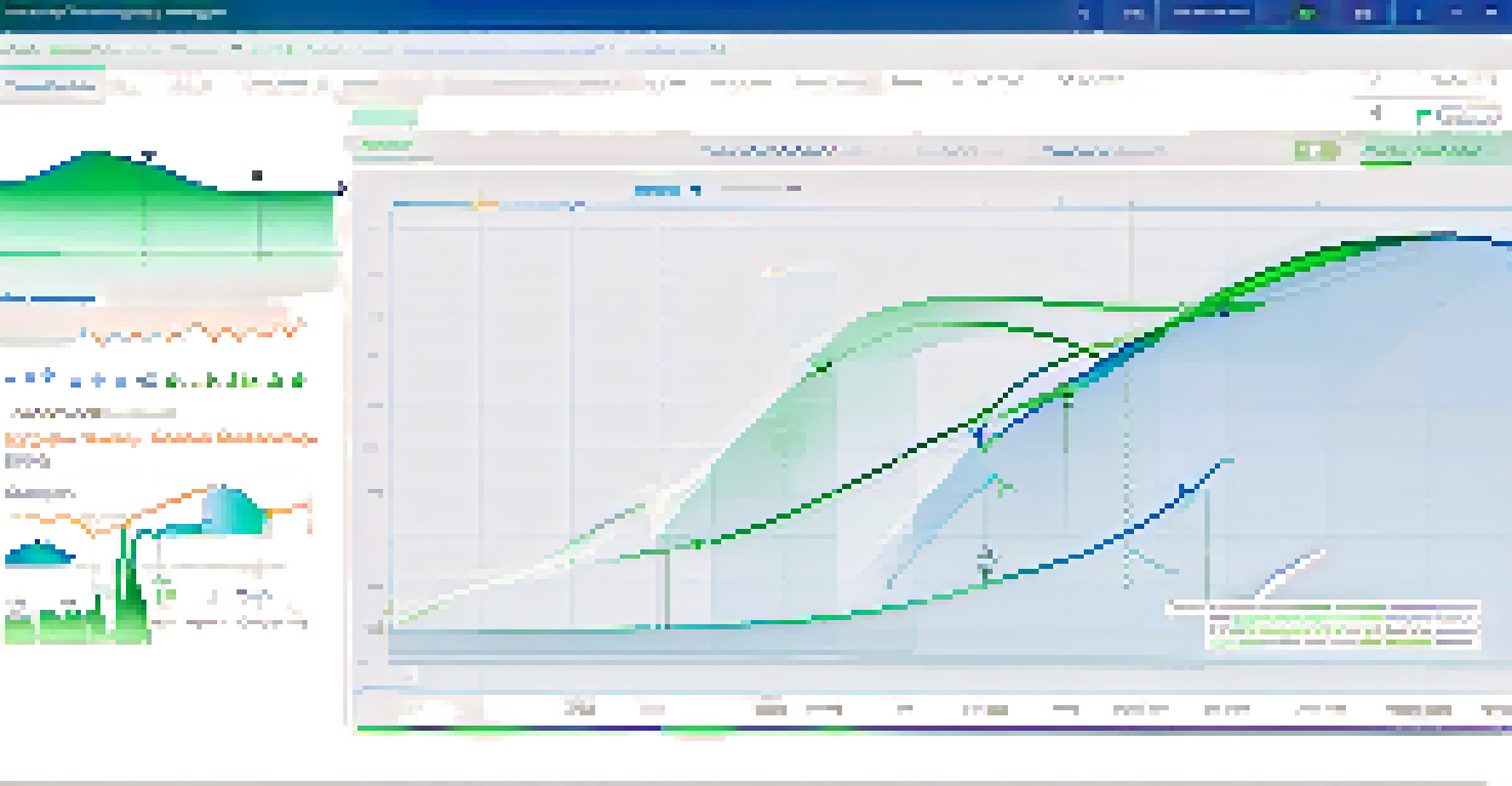Moving Averages: A Fundamental Tool in Crypto Trading Analysis

Understanding Moving Averages in Crypto Trading
Moving averages are statistical tools that help traders smooth out price data over a specific period. In the chaotic world of cryptocurrency, they provide a clearer picture of trends by filtering out the noise of daily price fluctuations. This makes them essential for traders seeking to make informed decisions based on market movements.
In investing, what is comfortable is rarely profitable.
There are mainly two types of moving averages: simple moving averages (SMA) and exponential moving averages (EMA). The SMA calculates the average of prices over a set number of periods, while the EMA gives more weight to recent prices, making it more responsive to new information. Understanding these differences can significantly impact trading strategies.
By incorporating moving averages into their analysis, traders can identify potential buy or sell signals. For instance, when a short-term moving average crosses above a long-term moving average, it may indicate a bullish trend. Conversely, a cross below can suggest a bearish trend, helping traders navigate the volatile crypto market.
The Role of Moving Averages in Trend Identification
One of the primary uses of moving averages is to identify trends in the market. Traders often look for upward (bullish) or downward (bearish) trends to inform their trading decisions. By analyzing the direction of moving averages, traders can gauge whether to enter or exit a position.

For example, if the price of Bitcoin is consistently above its 50-day moving average, it may suggest that a bullish trend is underway. On the other hand, if the price falls below this average, it could indicate that the momentum is shifting, prompting traders to reassess their positions.
Types of Moving Averages Explained
Traders use simple moving averages (SMA) and exponential moving averages (EMA) to analyze price trends, each serving a unique purpose in trading strategies.
Additionally, moving averages can act as dynamic support and resistance levels. When the price approaches a moving average from above, it may find support, while approaching from below could lead to resistance. This behavior can help traders set stop-loss orders and profit targets effectively.
Using Moving Averages to Generate Trading Signals
Moving averages can help generate trading signals that guide traders in their decision-making process. One common strategy is the moving average crossover, where traders look for points where a short-term moving average crosses a long-term moving average. These crossovers can serve as potential buy or sell signals.
The trend is your friend until the end when it bends.
For instance, a trader might buy when a 10-day EMA crosses above a 50-day EMA, indicating a potential upward trend. Conversely, if the 10-day EMA crosses below the 50-day EMA, it might be a signal to sell or short the asset. This method can help traders capitalize on market momentum.
It's important to note that while moving averages are helpful, they should not be used in isolation. Combining them with other indicators, such as RSI or MACD, can provide a more comprehensive view of market conditions and reduce the risk of false signals.
Limitations of Moving Averages in Crypto Trading
Despite their usefulness, moving averages do have limitations that traders should be aware of. One significant drawback is that they are lagging indicators, meaning they rely on past price data and may not accurately predict future movements. This delay can result in missed trading opportunities or late entries and exits.
Additionally, during periods of high volatility, moving averages may produce false signals. The rapid price changes in the crypto market can cause moving averages to react slowly, leading to potential losses for traders. Therefore, it's essential to use moving averages in conjunction with other analysis tools.
Moving Averages Signal Trends
Moving averages help traders identify bullish or bearish trends and can act as dynamic support and resistance levels for making informed trading decisions.
Traders should also consider the length of time periods selected for their moving averages. Shorter time frames can lead to more frequent signals but may also increase noise, while longer time frames can smooth out these fluctuations but may lag behind market movements. Finding the right balance is crucial for effective trading.
Combining Moving Averages with Other Indicators
To enhance trading strategies, many traders combine moving averages with other technical indicators. For instance, the Relative Strength Index (RSI) can help identify overbought or oversold conditions in the market. By using both moving averages and RSI, traders can make more informed decisions about their entries and exits.
Another popular combination is using moving averages alongside Bollinger Bands. Bollinger Bands provide insight into price volatility, while moving averages indicate the trend direction. This combination allows traders to identify potential breakouts or reversals more effectively.
By adopting a multi-faceted approach to analysis, traders can mitigate the limitations of relying solely on moving averages. This strategy not only improves the accuracy of trading signals but also builds a more robust trading plan tailored to the unique characteristics of the crypto market.
Real-World Applications of Moving Averages in Crypto Trading
Moving averages are not just theoretical concepts; they have practical applications in real-world crypto trading. For example, many traders use moving averages to establish their trading strategies on platforms like Binance or Coinbase. They often set alerts based on moving average crossovers to automate their trading decisions.
Professional traders and analysts frequently share their insights on social media platforms, demonstrating how they incorporate moving averages into their analysis. Following these thought leaders can provide valuable perspectives and inspire traders to refine their strategies.
Combine Indicators for Success
Using moving averages alongside other indicators like RSI or Bollinger Bands enhances trading strategies and reduces the risk of false signals.
Moreover, backtesting moving average strategies on historical data can help traders gauge their effectiveness before implementing them in live markets. This process allows traders to fine-tune their approach and gain confidence in their trading decisions.
Conclusion: Mastering Moving Averages for Better Trading
In conclusion, moving averages are a fundamental tool for anyone involved in crypto trading. Their ability to smooth out price data and identify trends makes them invaluable for both novice and experienced traders. Understanding how to effectively use moving averages can significantly enhance trading strategies and decision-making.
While moving averages are powerful, it's essential to recognize their limitations and use them in conjunction with other indicators. A well-rounded approach that combines moving averages with additional analysis can lead to more successful trading outcomes.

By mastering moving averages and continuously adapting to market conditions, traders can improve their chances of navigating the volatile crypto landscape effectively. So, whether you’re just starting or looking to refine your trading skills, incorporating moving averages into your strategy could be a game-changer.